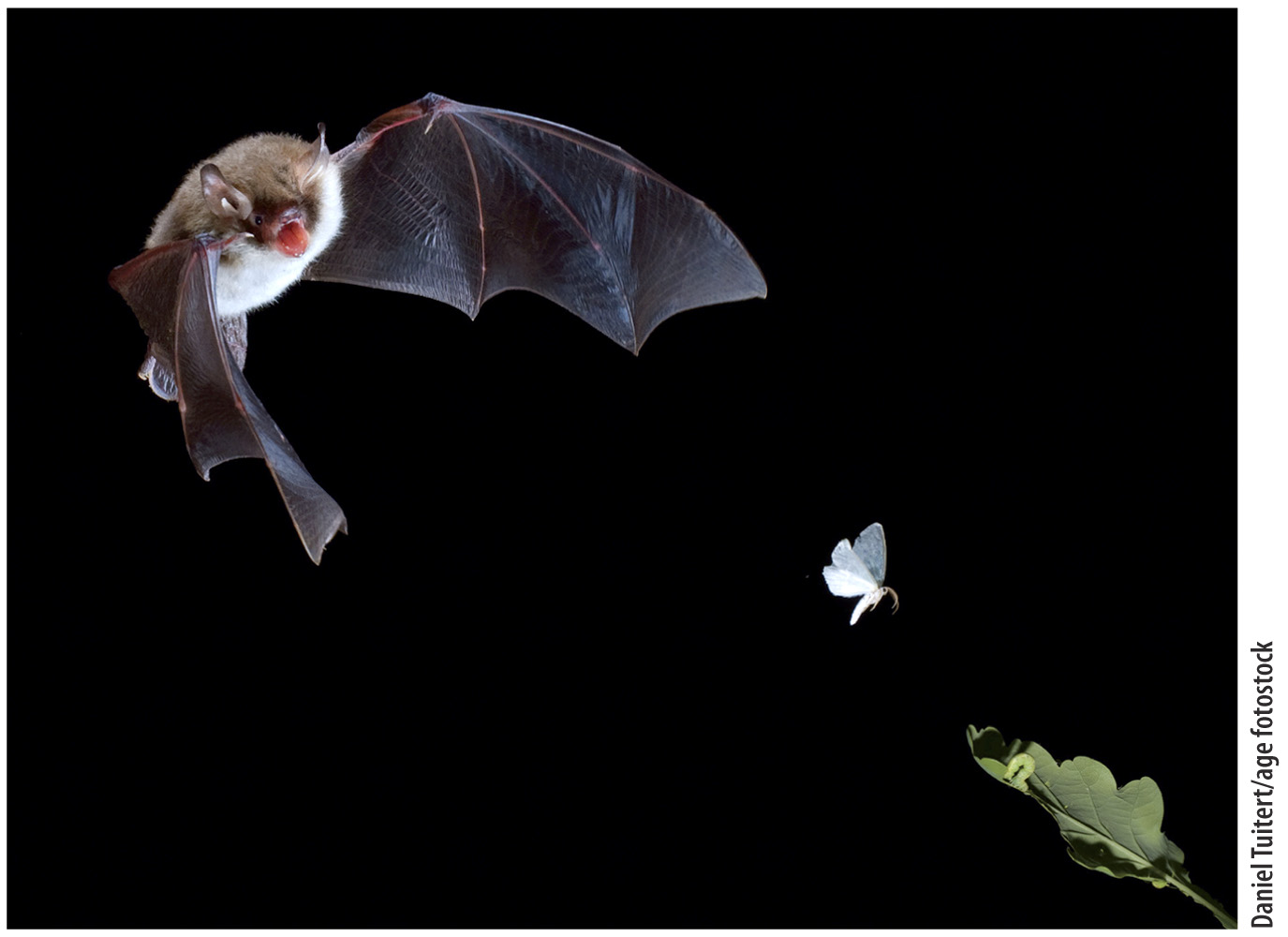Case 7: How have sensory systems evolved in predators and prey?
CASE 7 PREDATOR–PREY: A GAME OF LIFE AND DEATH
Many insect-eating bats rely on echolocation to find and apprehend their flying prey (Fig. 36.10). As it flies, a bat emits short bursts of high-frequency sound. These sound pulses bounce off surrounding objects and are reflected back to the bat. The echoes are detected by the ears and processed by the brain to locate the prey. Bats typically increase their call rate as they approach the prey to locate it more accurately and judge its flight trajectory and speed. The sharpness of an image is measured by its resolution, the smallest distance between two features or objects that can be perceived. Bats can resolve prey and other objects at less than 1 mm, a resolution that exceeds that of the most sophisticated sonar developed by human engineers.

FIG. 36.10 A bat about to catch a moth by high-frequency auditory echolocation.
Together with mosquitoes and other flying insects, nocturnal moths are one of the bat’s primary food sources. In response to the evolution of echolocation by bats, several moths have evolved the ability to emit sounds that interfere with the bat’s sonar signal. These moths are more likely to escape capture. The evolution of sophisticated sensory systems in both groups of animals, and the brain organization that goes with it, is the result of a kind of evolutionary arms race. It illustrates how animal sensory systems and brains can achieve impressive detection and information-processing performance that improves an animal’s chance of survival.
